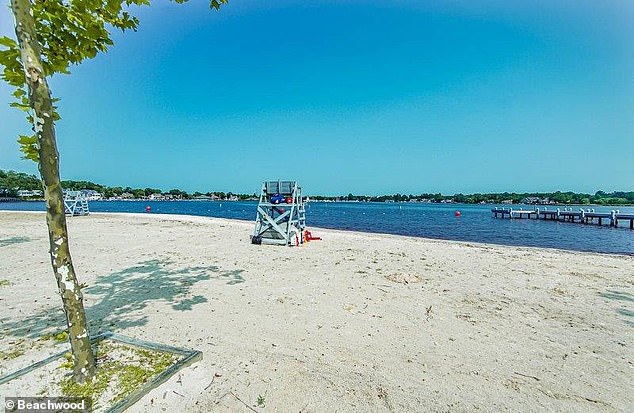Beachgoers at a beautiful New Jersey beach will have to stick to the sand after city officials banned swimming in the water for the rest of the summer.
Officials in the town of Beachwood, a coastal town located on the Jersey Shore, announced the devastating news after high levels of bacteria were found in the water.
The decision was made based on reports from the Ocean County Health Department, which indicated that the excessive level of bacteria could pose a risk to public health and safety.
The mayor and council said the closure was necessary “for the safety, health and well-being of residents and others,” in a statement posted on the district’s website.
Despite the closure of the waters to bathers, visitors can still enjoy the sand and panoramic views of the beach, but swimming will not be permitted.
Beachwood Beach, New Jersey, on the Jersey Shore, pictured, will be closed to swimming for the rest of the summer after high levels of bacteria were found in the water.
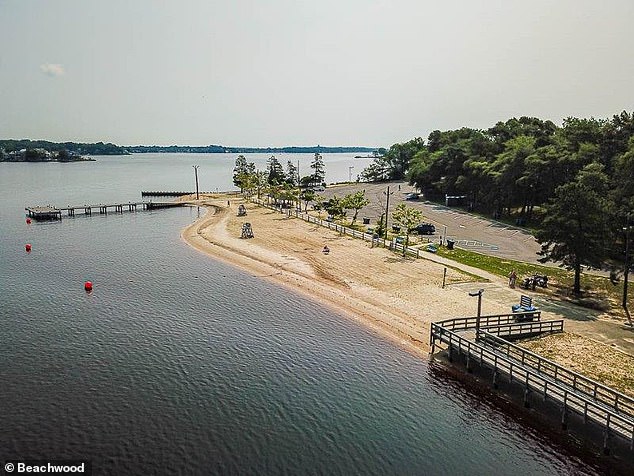
Ocean County Health Department reports that excessive levels of bacteria could pose a risk to public health and safety. Above, Beachwood Beach in New Jersey
‘For the safety, health and welfare of residents and others, the Mayor and Council have decided to close swimming at the beach for the remainder of the 2024 season due to the Ocean County Health Department reporting excessive levels of bacteria found in the water,’ the full announcement reads.
“You will still be able to sit and enjoy the beautiful view of the landscape, but no one will be allowed to swim,” the statement continued.
New Jersey Department of Environmental Protection guidelines set out how the water quality standard for swimmable beaches is determined by the concentration of enterococcus bacteria, a common microbe in human and animal feces.
It can cause illnesses, including gastrointestinal conditions, and is known to cause ear, nose and throat infections, according to the U.S. Environmental Protection Agency.
If the concentration exceeds 104 colonies per 100 milliliters in two consecutive samples, the beach must be closed.
The measure ensures that pollutants affecting bathing water do not pose a risk to public health.
The beach is not located on the Atlantic Ocean, but slightly inland on the Toms River, which flows into Barnegat Bay.
Ocean County Public Health Coordinator and Health Officer Dan Regenye said the beach’s fecal bacteria level has historically been a problem.
“In my 30 years here, I’ve historically always come back with some issues in terms of some of the high counts. I know we’ve worked a lot historically with the township and with the county engineer with the DEP looking at the potential source,” Regenye said. New Jersey 101.5.
Regenye believes the location along Route 9 could be part of the problem.
“It looks like a little inlet where it’s not cleaned properly and the substances get trapped, which I think exacerbates the problem,” Regenye said. “It just recirculates and doesn’t have the ability to dilute as quickly.”
“We obviously want to be able to open it up and make it safe as soon as possible,” Regyne said.
This is the second year in a row that swimming will be banned at Beachwood Beach.
Last year, swimming was banned again after district officials failed to hire lifeguards at the time after receiving only one application.
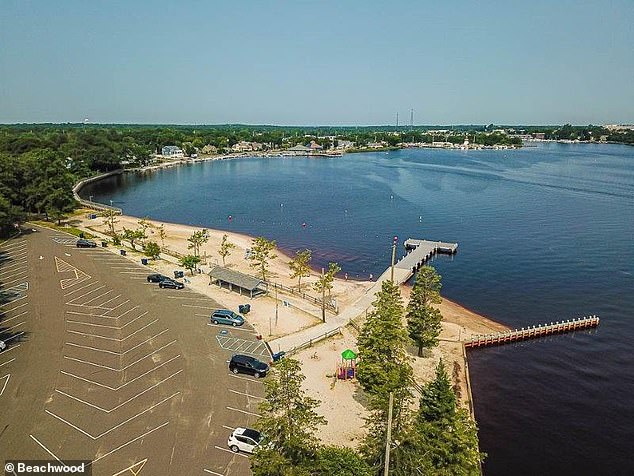
Beachwood officials have assured those who purchased beach permits for the seasons that their money will be refunded in due time. Above, Beachwood Beach in New Jersey.
Beachwood officials have assured those who purchased beach permits that they will receive a refund in due time.
A report earlier this month found that more than half of U.S. beaches contain potentially dangerous levels of feces.
Tests at more than 3,000 beaches across the country’s coastline showed that 55 percent of them had dangerous levels of sewage in their waters on at least one day last year. One in nine beaches had persistently dangerous levels last year.
Experts say about one in 30 people who swim in sewage-contaminated waters are at risk of getting sick, either by swallowing the water, which can cause stomach problems, diarrhea, abdominal cramps and vomiting, or through infections.
Southern states along the Gulf Coast, including Florida, Texas and Louisiana, were hit hardest: 84 percent of their beaches had at least one day in 2022 when the water was contaminated with feces.
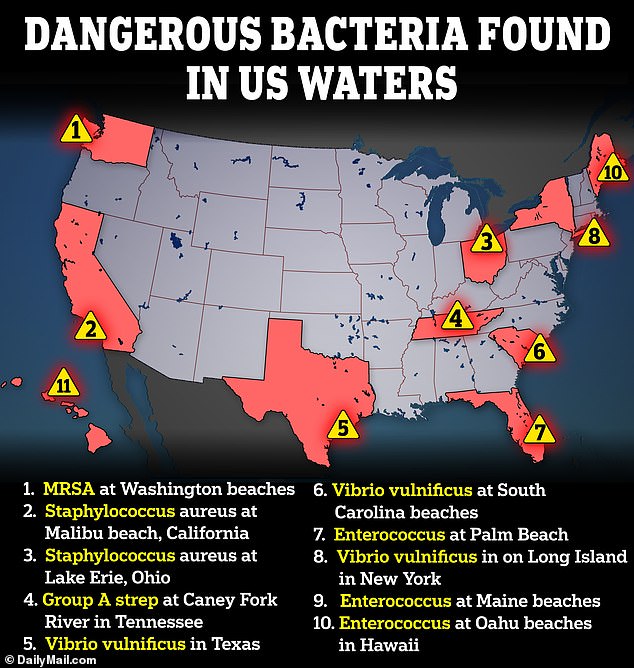
Dangerous bacteria that can corrode flesh can be found on beaches and holiday resorts across the country. Above are several examples of places where they have been detected.
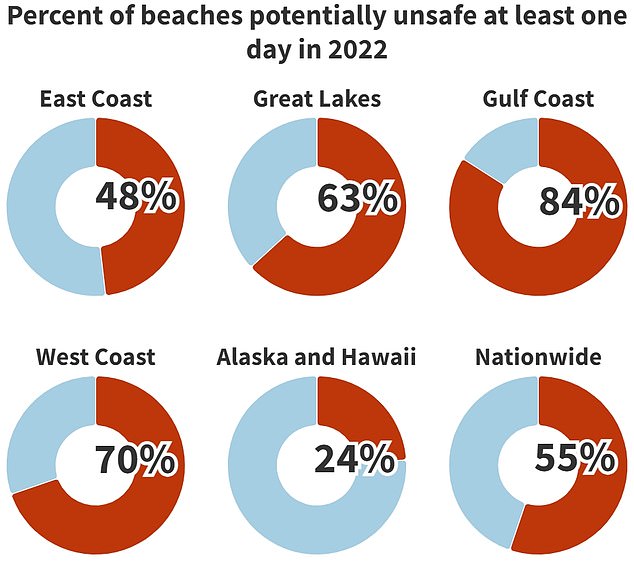
The above analysis breaks down U.S. coastal areas by region. It reveals that the Gulf Coast was hardest hit, with 84 percent of beaches unsafe for swimming at least once last year, followed by the West Coast and the Great Lakes region.
Americans make 400 million visits to the beach each year, according to the American Lifesaving Association.
But there have been concerns about water quality for years.
Colorado-based advocacy group Environment America compiled the data as part of its annual “Is It Safe to Swim?” report.
Faeces can wash into the sea after storms, and rainwater can cause drains and sewage systems to overflow and spill their contents. They can also wash into the sea through rivers that collect manure from factory farms.
The latest report was based on figures from the National Water Quality Monitoring Council, part of the Environmental Protection Agency (EPA), which tracks water quality at beaches across the United States.
A total of 3,192 beaches were included in the report. On average, states test their beach water for sewage contamination about once a week.

